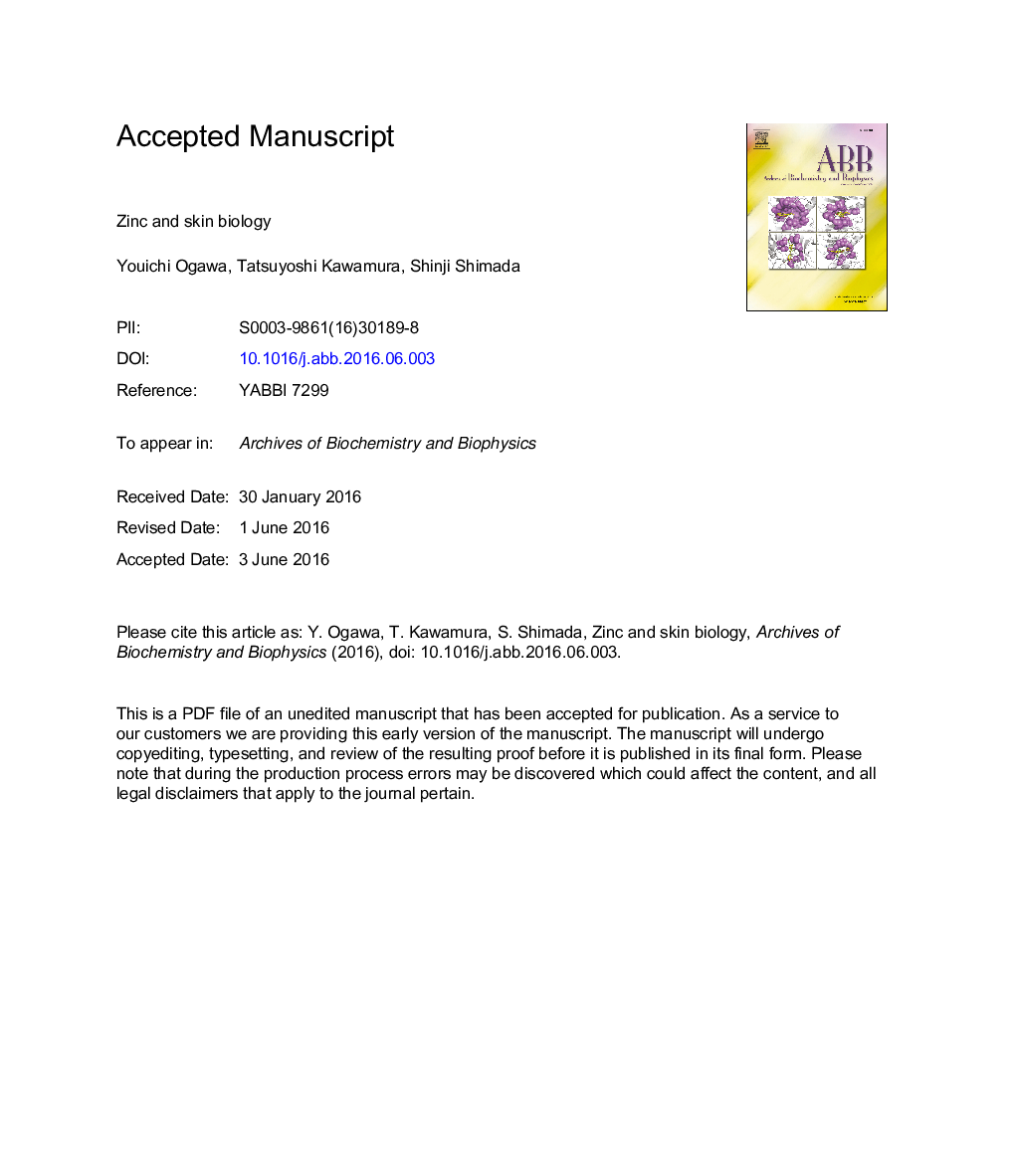| Article ID | Journal | Published Year | Pages | File Type |
|---|---|---|---|---|
| 5504512 | Archives of Biochemistry and Biophysics | 2016 | 32 Pages |
Abstract
Of all tissues, the skin has the third highest abundance of zinc in the body. In the skin, the zinc concentration is higher in the epidermis than in the dermis, owing to a zinc requirement for the active proliferation and differentiation of epidermal keratinocytes. Here we review the dynamics and functions of zinc in the skin as well as skin disorders associated with zinc deficiency, zinc finger domain-containing proteins, and zinc transporters. Among skin disorders associated with zinc deficiency, acrodermatitis enteropathica is a disorder caused by mutations in the ZIP4 transporter and subsequent zinc deficiency. The triad acrodermatitis enteropathica is characterized by alopecia, diarrhea, and skin lesions in acral, periorificial, and anogenital areas. We highlight the underlying mechanism of the development of acrodermatitis because of zinc deficiency by describing our new findings. We also discuss the accumulating evidence on zinc deficiency in alopecia and necrolytic migratory erythema, which is typically associated with glucagonomas.
Keywords
Acrodermatitis enteropathicaAMPICAMNTPDaseTPENTGFAP-1MAPKATPadenosine monophosphatealopeciaNecrolytic migratory erythematransforming growth factorLangerhans cellsendoplasmic reticulumZincBMPintercellular adhesion moleculenucleoside triphosphate diphosphohydrolaseBone morphogenetic proteinmitogen-activated protein kinaseSkin
Related Topics
Life Sciences
Biochemistry, Genetics and Molecular Biology
Biochemistry
Authors
Youichi Ogawa, Tatsuyoshi Kawamura, Shinji Shimada,
